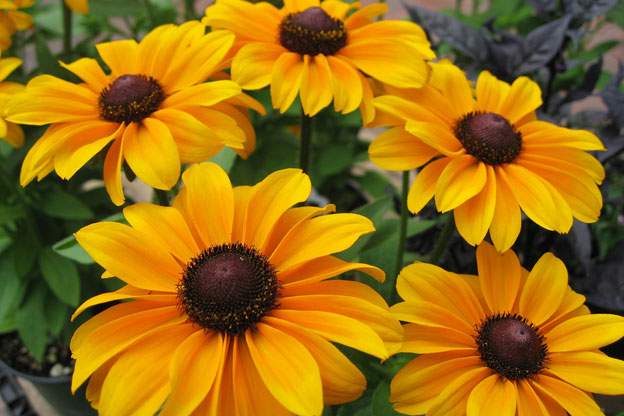
In my Midwest garden, July is the month when the black-eyed Susans bloom, and I love the way they create bright splashes of gold in gardens all over the city.
They are a popular pass-along plant, as they are easy to grow and they multiply quickly. This can be a blessing but also a problem, as they may increase so much in a mixed bed that they can smother their less robust neighbors.
It's best if they grow in a spot on their own where they can increase at will without engulfing other plants. In small gardens, however, this is not always as option, so the gardener has to remove some of the plants regularly and also be vigilant about deadheading.
Without judicious removal of the dead blooms the seeds will self-sow abundantly.
The botanical name for these exuberant plants is Rudbeckia hirta and butterflies love them.
Their seeds need warmth to germinate, so if you are planting them sow the seeds once the soil has really warmed up. This is not a problem, as they will have plenty of time to mature since the plants don't bloom until high summer. They like any reasonably loose soil that has space for another plant to take hold. They will also coexist with weeds, as they are adaptable almost to a fault.
Note: For cut bouquets snip only single-stemmed blooms, as they quickly wilt in a vase if multiple blooms are on the same stem.









